#fish oil krill oil
Explore tagged Tumblr posts
Text
Krill Oil vs. Fish Oil: Which Omega-3 Source is Right for You?
Krill Oil vs. Fish Oil: Which Omega-3 Source is Right for You?
If you're shopping for omega-3 supplements, you’ve likely to come across two main contenders: krill oil and fish oil. They’re both packed with nutrients, but you might be wondering, “Krill oil vs. fish oil—which one is really right for me?” Let’s break down what makes each unique and help you find the best fit for your health goals.
What Exactly is Krill Oil?
To understand how krill oil stacks up, let’s get familiar with what it is. Sourced from tiny, shrimp-like creatures called krill, krill oil is packed with omega-3 fatty acids (EPA and DHA), just like fish oil. However, it has an edge: it contains astaxanthin, a powerful antioxidant that gives krill oil its reddish color and helps protect your cells from damage. If you’re looking for an extra health boost, krill oil supplements might be just the thing.
Krill Oil vs. Fish Oil: The Differences That Matter
When it comes to krill oil vs. fish oil, here are the key differences to consider:
Absorption Krill oil has an advantage in how it's absorbed. Thanks to its unique structure, it’s more easily taken up by our bodies than fish oil. This is because krill oil's omega-3s are bound to phospholipids, which our cells handle better than the triglycerides found in fish oil. So, if you want an omega-3 source that’s likely to deliver faster, krill oil might be worth considering.
Purity Krill oil usually contains fewer impurities than fish oil because krill are lower on the food chain and are less likely to contain toxins like mercury or heavy metals. Larger fish can absorb these toxins, so if you’re focused on purity, krill oil supplements could offer peace of mind.
Antioxidants Here’s where krill oil really shines: it’s packed with astaxanthin, a potent antioxidant that fights oxidative stress and inflammation. Fish oil doesn’t contain this antioxidant, so if extra cell protection is a priority for you, krill oil might have the upper hand.
The Benefits of Krill Oil
So, why might krill oil be the right choice? Here’s a rundown of the benefits krill oil supplements bring to the table:
Heart Health: Both krill oil and fish oil support heart health, but krill oil’s higher absorption rate and antioxidant content might give it an edge. Studies show omega-3 fatty acids help lower triglycerides, reduce inflammation, and improve cholesterol—essential for heart health. If you’re considering omega-3 supplements for heart health, krill oil could be an ideal option.
Joint Health: Omega-3s in krill oil may also ease joint pain and reduce inflammation, which is great news if you struggle with arthritis or other joint issues. Plus, krill oil’s antioxidants could offer even more relief.
Brain Function: Omega-3s, particularly DHA, are key for brain health. Because of its phospholipid structure, krill oil may help omega-3s cross the blood-brain barrier more easily, providing better support for memory, focus, and overall brain function.
Skin Health: Krill oil’s antioxidant power also benefits skin health. Astaxanthin helps protect your skin from UV damage, supports hydration, and even reduces wrinkles. Not bad for a daily supplement!
The Real Benefits of Omega-3 Fatty Acids
Whether you go with krill oil or fish oil, omega-3 fatty acids are essential. Here’s how they can make a difference in your health:
Heart Health: Omega-3s are best known for supporting heart health by lowering triglycerides, reducing blood pressure, and fighting inflammation. Both krill oil and fish oil offer these benefits, making them great omega-3 supplements for your heart.
Brain Health: DHA, a main omega-3 in krill oil and fish oil, supports mental clarity and cognitive health. Research also links omega-3s to better mood, which is a nice bonus.
Joint Health: Omega-3s’ anti-inflammatory benefits can be a big help for joint pain. Both krill oil and fish oil can ease discomfort and improve mobility.
Skin Health: Omega-3s keep skin hydrated, reduce signs of aging, and support elasticity. Both options—krill oil and fish oil—can help keep your skin looking its best.
So, Which One Should You Pick?
At the end of the day, krill oil vs. fish oil—which should you choose?
If you want easier absorption, added antioxidants, and a cleaner source, krill oil might be your go-to. It’s a powerhouse for heart, joint, brain, and skin health, making it a well-rounded option.
On a budget or okay with taking a bit more to get the same effect? Fish oil is still an excellent choice. It provides similar omega-3 benefits, though you may need a slightly higher dose.
Both krill oil and fish oil are rich in omega-3s and offer valuable health benefits. The choice boils down to what matters most to you: if better absorption, added antioxidants, or purity are priorities, krill oil could be the way to go. Either way, adding omega-3 supplements to your routine is a fantastic choice for overall health. Whether it’s krill oil supplements or fish oil, both support your heart, brain, joints, and more.
#Krill oil vs fish oil#what is krill oil#Krill oil#Benefits of krill oil#Omega-3 fatty acids benefits#Best omega-3 supplements#Krill oil supplements#Omega-3 source#Omega-3 supplements#Omega-3 supplements for heart health#fish oil supplements#Antarctic krill oil#omega3#omega 3 fish oil#omega fatty acids
0 notes
Text
0 notes
Text
Krill Oil vs. Fish Oil: Unraveling the Key Differences and Benefits
Introduction: In the realm of nutritional supplements, two powerhouses reign supreme: krill oil and fish oil. Both boast a plethora of health benefits, thanks to their rich omega-3 fatty acid content. However, delving deeper into their compositions, sources, and potential advantages can help individuals make informed choices about which supplement best suits their needs.
Composition: Krill oil and fish oil both serve as excellent sources of omega-3 fatty acids, namely EPA (eicosapentaenoic acid) and DHA (docosahexaenoic acid), which are renowned for their cardiovascular, cognitive, and anti-inflammatory benefits. However, the key disparity lies in their structural makeup. Krill oil contains these fatty acids in the form of phospholipids, whereas fish oil delivers them in the triglyceride form. This structural distinction influences factors such as absorption rates and bioavailability within the body.
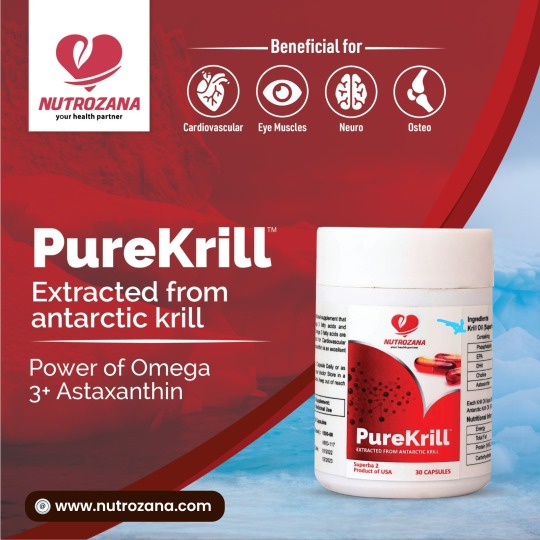
Absorption and Bioavailability: The phospholipid structure of krill oil facilitates better absorption compared to the triglyceride form found in fish oil. Studies suggest that the phospholipids in krill oil may enhance the uptake of EPA and DHA into cells, thereby potentially maximizing their therapeutic effects. Additionally, krill oil contains astaxanthin, a potent antioxidant with anti-inflammatory properties, which may further augment its bioavailability and overall health benefits.
Sustainability and Environmental Impact: One crucial consideration when comparing krill oil and fish oil is their ecological footprint. Krill, tiny crustaceans found in the Antarctic Ocean, serve as a primary food source for various marine organisms, including whales, seals, and penguins. Harvesting krill for oil extraction raises concerns about its impact on marine ecosystems and biodiversity. Conversely, fish oil production often involves species such as anchovies, sardines, and mackerel, which are more abundant and less susceptible to overexploitation. Therefore, conscientious consumers may opt for fish oil sourced from sustainably managed fisheries to mitigate environmental concerns.
Potential Benefits and Applications: Both krill oil and fish oil offer an array of health benefits, ranging from cardiovascular support to cognitive enhancement. However, certain nuances differentiate their potential applications. Krill oil's superior bioavailability may make it particularly advantageous for individuals seeking targeted support for conditions such as arthritis or dyslipidemia. On the other hand, fish oil's affordability and widespread availability make it a practical choice for individuals aiming to maintain overall health and well-being without breaking the bank.
Conclusion: In the ongoing debate between krill oil and fish oil, understanding their distinctions is paramount for informed decision-making. While both supplements offer valuable omega-3 fatty acids, factors such as absorption, sustainability, and specific health goals should guide the choice between the two. Ultimately, whether opting for the phospholipid-rich krill oil or the traditional fish oil, incorporating omega-3 supplementation into one's regimen can pave the way for improved health and vitality.
0 notes
Text
Transform Your Body: Discover the Ultimate Weight Loss Solution
Are you ready to uncover the extraordinary breakthrough in weight loss? Look no further, as we present to you the Ultimate Weight Loss Solution, a game-changer in your quest for a healthier, more vibrant life. Say goodbye to frustrating plateaus, endless calorie counting, and ineffective methods that have left you feeling discouraged. Our revolutionary approach combines cutting-edge science, personalized strategies, and unwavering support to help you achieve the body you've always dreamed of.
Discover the Ultimate Weight Loss Solution, where your journey begins with an in-depth assessment of your unique needs and goals. Our team of experts will craft a tailored plan that integrates sustainable nutrition, dynamic exercise routines, and powerful mindset techniques. No more guesswork or one-size-fits-all solutions—this is a holistic approach designed exclusively for you.
Imagine a life where healthy habits become second nature, where your body becomes a fat-burning machine, and where you feel invigorated and confident every step of the way. The Ultimate Weight Loss Solution empowers you to take control of your health, transform your body, and unlock a newfound vitality that radiates from within.
Join the ranks of countless success stories and embark on a remarkable journey towards the body and lifestyle you deserve. It's time to stop dreaming and start living. Discover the Ultimate Weight Loss Solution today and embrace a future of limitless possibilities.


#Weight loss#low cal diet#weight lifting#best fish oil capsules#kril oil#fish oil pills#omega 3#omega 3 fish oil#omega 3 fatty acids#epa fish oil#best fish oil supplement#omega 3 supplements#best krill oil#fish oil capsules#dha supplement#omega 3 fatty acid supplement#fish oil tablets#fish oil supplements#fat girls#fat burning
0 notes
Text
My lovely friends, this is a friendly evidence-based post pertaining to the risk reduction of a few well-known health effects of 4n4 and mia. Including: Amenorrhea (loss of regular menstrual period), anaemia, digestive upset, dehydration, electrolyte imbalance, general well-being, and osteoporosis. It is quite a long post, but please let me know if there’s any other information you would like me to cover. 💕
🪐 Vitamins and Supplements:
• A-Z Multivitamin. Is beneficial for supplementation. For example, Vitamin C is a vitally important vitamin for the body’s connective tissues, including the maintenance of healthy bones and teeth, cellular formation and maturation, resistance to infection, and an increased ability to heal. Additionally, B12 contributes to an adequately functioning nervous system, bone marrow, and intestinal tract. It also acts to increase metabolism of protein, carbohydrates, and fats. Finally vitamin B2 when combined with Vitamin A promotes good vision and healthy skin, as well as assists in metabolising proteins and fats at a cellular level.
• Calcium and Vitamin D. Seek a preparation which offers 1000mg of calcium and 10-20mcg (400-800 iu) of vitamin D. Vitamin D increases the bodies efficacy during the absorption, retention, and metabolising of calcium. Calcium of course being vital for bone integrity and imperative for the prevention of osteopenia/osteoporosis.
• Iron. An appropriate iron intake will restore the functionality of red blood cells, allowing the proper oxygen transportation around the body, increase focus, energy, athletic performance, and sleep. Having a sufficient iron store will alleviate some commonly experienced symptoms of low iron including fatigue, dizziness, pallor, and shortness of breath. It may also reduce the sensation of cold hands and feet.
• Potassium and Zinc. A lack of zinc impairs the ability to smell and taste. Connecting this impairment to nose blindness. For example, a lack of a sense of smell and taste may impair one’s own ability to detect their own bad breath, BO, and other unpleasant smells that others may be able to detect.
• Omega 3’s - Fish oil, Krill oil, Hemp oil, or Flaxseed oil. Improper dietary intake, or supplementation of omega 3 fatty acids will result in areas of epidermal (skin) dryness, hyperkeratosis, and hyperpigmentation. As well as the formation large scales expose underlying tissue, which are easily infected. The hair becomes sparse, dry, lusterless, and brittle, with a reddish tinge. Furthermore, nails become brittle and dull, tear production reduces, the tears are also significantly less oily leading to increased evaporation contributing to chronically dry, red, and itchy eyes.
If oil supplements are scary for you to intake due to calorie fears (there is only approx 25 calories in 2 average fish oil capsules). There are dietary sources of omega 3 that are relatively low calorie including chia seeds, edamame, and seaweed. However they provide little amounts in comparison to supplementation or traditional dietary sources such as fish, avocado, oils etc.
However this should also be considered when deciding whether to supplement omega 3’s - they stimulate the secretion of leptin, a hormone that decreases appetite and promotes the burning of fat. Through the enabling of conversion of dietary fats into body cells for burning as fuel.
🍄 Dietary Intake
•Bone broth (or vegetable broth if meat is not apart of your diet ☺️) I cannot stress how great bone broth is! Extremely low calorie, but incredibly nutrient-dense. It also acts to decrease the inflammation within the gut that many of us will experience due to our dietary habits. Including conditions such as constipation, gastroparesis, liver disease, bloating, abdominal pain, and stomach ulceration.
Bone broth also contains large amounts of protein, collagen, iron, vitamins A and K, fatty acids, selenium, zinc, and manganese. Protein being the most satiating macronutrient can decrease hunger and associated discomfort. Collagen and the variety of micronutrients within the bone broth contributes to joint and bone health. Bone broth will also contribute to hydration.
•Nutrient-dense foods including blueberries l are among the best sources of anthocyanins (antioxidants) that promote brain health and reduce the risk of cognitive decline. Additionally, red tomatoes and red capsicum (Peppers). Tomatoes are the richest source of lycopene, which is a type of carotenoid found in red fruits that has powerful antioxidant effect that may help protect against heart disease and certain types of cancer.
•Fibre is imperative for smooth gastrointestinal function, including regular bowel movements. Fibre is of course typically found in whole fruits and vegetables, beans/lentils, and whole grains. Low calorie fibre sources include: red kidney beans, carrot, and chickpeas. Psyllium, chia seeds are also good sources of fibre. Fibre supplants such as Metamucil may also aid to increase fibre intake. An adequate intake of fibre may reduce the dependence of laxative for bowel movements. Prolonged use of laxatives may create a dependency on them to even have a bowel movement.
🥥 Adequate Hydration
• The best way to ensure adequate hydration is simply by consuming enough water during the day. However, if plain water consumption is difficult, fluid intake will also suffice. Including fluid such as teas, flavoured/enhanced water, diet soft drinks, juices, etc. The optimal fluids to consume in addition to, or instead of simple water to ensure adequate hydration is mineral water, coconut water, or diet electrolyte replacements (Powerade/Gatorade, Pedialyte, Hydralyte). Correct hydration and electrolyte intake will reduce headaches, constipation, and muscle cramps/weakness.
❤️ Reproductive Health
•Amenorrhea is a common experience for those of us with a uterus. However it is imperative to understand that you are more than likely still ovulating despite the lack of a regular menstrual period. Therefore, contraception must still be used. Amenorrhea may be alleviated through dietary supplementation and small changes to the diet to include more micronutrients, but it may not be completely fixed unless there is an increase to body fat percentages.
#fitblr#ed not ed sheeran#ed#edblr#edtwt#ed tmblr#ed bullshit#anorex14#tw ana shit#ana and mia#tw mia#ana e mia#tw ed diet#meanspø#grossp0#fitspiration#notprojustusingthetags#4norexi4#4n4#4n4blr#4norexia
298 notes
·
View notes
Text
Wet Beast Wednesday: emperor penguin
This is the last Wet Beast Wednesday before Christmas and Christmas is associated with the north pole thanks to Santa. So to celebrate the season, I'm going about as far away from the north pole as it is possible to go and talking about the emperor penguin. This also happens to be the first dinosaur I've showcased on this series.
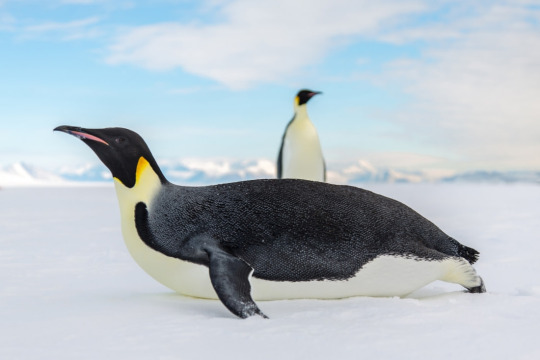
(image id: an emperor penguin lying belly-down on ice, seen from the side. Its back, wings, and head are black while its belly and neck are white. It has a patch of orange feathers near the ears. Another penguin is standing up in the background. end id)
Aptenodytes forsteri is the largest of all penguins and the sixth largest (by weight) bird in the world, only surpassed by the emu and two species each of the cassowary and ostrich. Those are all paleognaths, one of two living groups of birds, making the emperor penguin the largest of the other group: the neognaths. There are some discrepancies on their size due to the standards of bird measurement, but recent measurements list their standing height as reaching 120 cm (3.9 ft) with a weight of 22.7 to 45.4 kg (50 to 100 lbs). Their weight varies a lot during their lives, with both males and females losing a lot of weight during breeding season. Males generally weigh more than females. Genomic and anatomical analysis indicates that the emperor penguin, along with the closely-related king penguin and an extinct species, are part of a group of penguins that branched off of the family tree before the other living penguin species. As with other penguin species, they are heavily adapted for life in the water. All penguins are flightless, with their wings having adapted into flippers used for swimming. Penguins stand differently than other birds. Most birds have long legs and hold their bodies horizontally to the ground or at an angle, but penguins have short legs and hold their bodies vertically, like humans do. This, plus other adaptations, helps streamline the birds, letting them swim more efficiently. Like other seabirds, their feathers are very dense and coated with oil that repels water. This keeps the feathers from becoming waterlogged, reducing drag and helping keep the bird warm. During molting season, the feathers emerge from the skin mostly formed and push out the old feathers, preventing the penguin from developing bald or thin patched that would compromise insulation. While the feathers are responsible for most of the insulation, a layer of fat also helps. Like other birds, penguins are endothermic, commonly known as warm-blooded. Penguin tongues have backward-pointing barbs that help prevent food from escaping their mouths.
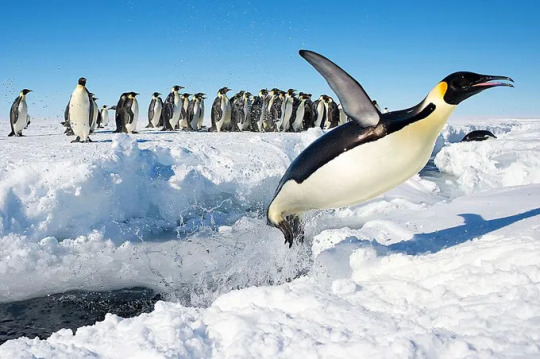
(image id: an emperor penguin jumping out of the water and onto ice. It is pictured in midair with its body roughly parallel to the ground and wings extended. Multiple other penguins are in the background. end id)
Emperor penguin's divide their year between the breeding season and the rest of their lives. During most of the year, they spend their time searching for food. Most of this food consists of fish, krill, and squid. Emperor penguins are social animals that often coordinate with each other to hunt in groups. While hunting, they will dive up to 535 meters (1,755 ft) and spend up to 21 minutes underwater before surfacing to breathe. During dives, the pressure can increase up to 40 times and the emperor penguin has some special adaptations to cope. Unlike most birds, emperor penguin bones are solid, reducing the chance of one breaking under pressure. During dives, the heartbeat slows dramatically and non-essential organs cease functioning to conserve oxygen in the blood. In addition, the hemoglobin in the red blood cells is modified to carry more oxygen in high pressure and low temperature. While on land, emperor penguins gather in colonies along the shoreline. Members of the colonies spend a lot of them time huddled against each other to keep warm. The penguins live all around Antarctica between 66 and 77 degrees southern latitude.
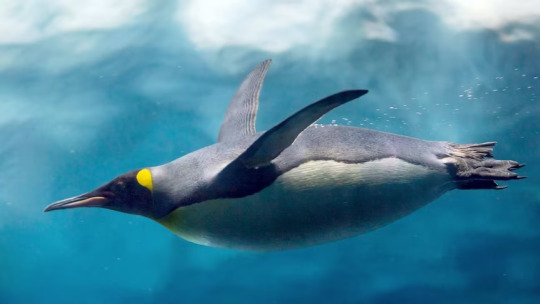
(image: an emperor penguin swimming underwater. Its head is pointed up, making its body very streamlines. Its wings are extended and are used for propulsion and steering. end id)
The thing emperor penguins are most famous for is their breeding behavior. Breeding season starts at the beginning of winter in Antarctica, between March and April, and is triggered by the decrease in day length. Penguin colonies travel inland en masse moving between 50 and 120 km (31 to 75 miles) to find a spot to raise their chicks. These spots are usually large, flat patches of sea or lake ice with a barrier such as a cliff or iceberg used to block the wind. Males perform sexual displays wherein they make loud courtship calls while wandering around the colony. When a female is interested, she will face they male and they will both hold their heads up for a few minutes. Once a pair os formed, they will walk around the colony together. When ready to mate, The pair will bow to each other. Emperor penguins are serially monogamous. They will only mate with one other penguin each season, but rarely pick the same mate more than once. The pair say together until the egg is laid in late May or early June. The female then transfers the egg (only one is laid every year) to the male, a tricky process. They have to use their feet to transfer the egg without dropping it. If the egg breaks or is exposed to the ice for more than a minute or so, it will die. It is not uncommon for an egg to be lost, especially in first-time parents. If this happens, both parents will leave the colony and return to the sea, not mating again until next year. The male balances the egg on his feet and covers it with a loose flap of skin. The bottom of this skin is a featherless patch called the brood patch that only forms during this season. By keeping the egg between his feet and the brood patch, the male incubates it. Once the egg is transferred, the female returns to the sea, leaving the male responsible for the next few months. In every other penguin species, the mother and father take turns incubating their egg. for the next 65-75 days, the male will incubate the egg in the middle of the Antarctic winter, where storms are frequent and temperatures can can reach into the -60s C (-70s F). He will not eat at all during this period, which, including travel and mating time, can last for 120 days. Males can lose up to half of their body mass during this fast. If the egg is dropped even once, it has a very high chance of dying. Walking without dropping the egg is tricky, but the males will form tight bunches to conserve body heat. These bunches are mobile, with members to the outside gradually moving inward and vice-versa. The egg usually hatches after around 60 days and it can take a few days to break out of its shell, which is thicker than in most bird species. The chicks are born featherless and will freeze to death if they leave the male's brood pouch. The male produces a substance called crop milk with a gland in his esophagus. Crop milk is unique to pigeons, flamingos, and male emperor penguins and is used to feed the chick. The crop milk does not provide full nourishment to the chick, but will keep it alive for about a week.
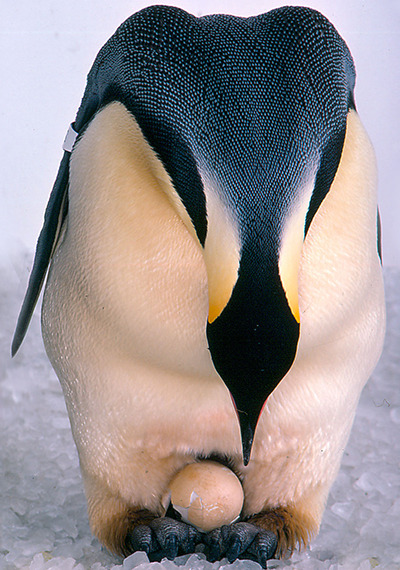
(image id: a male emperor penguin standing on ice with its egg balanced on its feet. The skin flap thet normally covers the egg is pulled back and the male is bending over to examine the egg. This egg is broken, possibly the result of being dropped, and is non-viable. end id)

(image id: a newly-hatched emperor penguin sitting on it's father's feet. It is very small and featherless, with grey skin and a black head. end id)
About this time, the female will return from her time at sea. She spent this time feeding and fattening herself up for the next leg of the parenting journey. She returns to the colony usually between 5 and 10 days after the hatching. If she arrives too late, the chick will starve. Once she arrives, she will locate her mate through the sound of his calls. The male then transfers the chick to the female's brood pouch and returns to the sea to feed and put weight on for another 3-4 weeks. The female will feed the chick by regurgitating half-digested food into its mouth. After this, the mother and father will take turns brooding the chick and feeding at sea. If either parent is delayed or dies, the chick will die as the remaining parent will eventually abandon it and return to sea. Orphaned chicks will try to seek food and shelter from other adults and mothers who have lost a chick may try to adopt an abandoned one, but as a single parent cannot raise a chick alone, it will eventually be abandoned as the adult goes to feed. Sometimes, a mother who lost her chick will attempt to steal a chick from another mother. This leads to fights over chicks that may leave chick trampled to death.
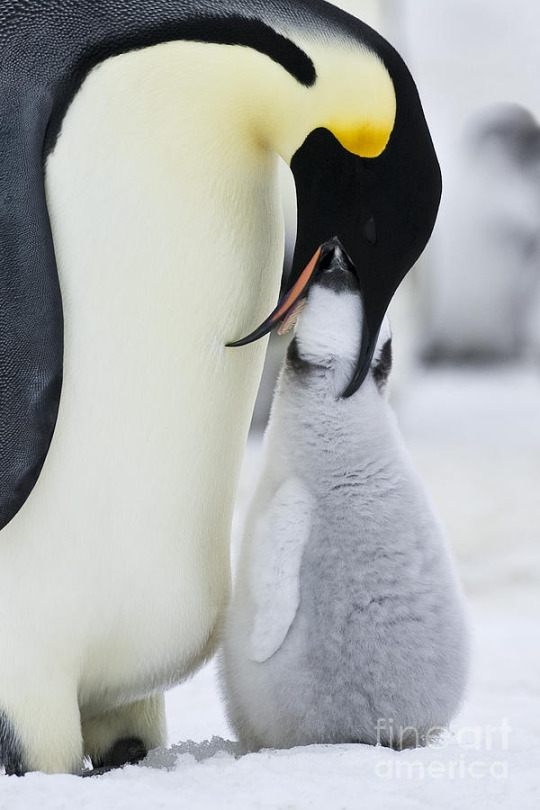
(image id: an adult emperor penguin feeding its chick. The chick is larger and covered in fluffy, grey, downy feathers. It no longer needs to stay on its parent's feet. The adult is looking down at the chick with its mouth open. The chick has its head inside the adult's mouth. end id)
Starting 45-50 days after hatching, the chicks now have a thick enough coat of down to survive outside of the brood pouch. Starting around this time, both parents will return to the sea and occasionally return to bring food, using the sound of their chick's vocalizations to track them down. When the parents are gone, the chick huddle together for warmth. Starting in early November, the chicks will start gaining their adult plumage and the adults will stop returning to feed them. Once they get hungry enough, the chicks will make the trip to the sea (which is shorter now as it is summer in the Antarctic and the sea ice has receded) and will be independent from now on. Only 15% of chicks survive their first year, but after that the survival rate is 95%, meaning most living emperor penguins are adults. Emperor penguins reach sexual maturity at 3 years, but most do not mate until they are 4-6 years old. The average lifespan of those who live long enough to reach adulthood is 20 years, but may live up to 50 years. The high survival rate of adults is in part due to a lack of predators. Adult emperor penguins are only hunted by leopard seals and orcas, though the former prefer juveniles. Juveniles are preyed upon by seals when they reach the water and by southern great petrels when on the ice. Adult emperor penguins lack any land predators, which has resulted in them having no prey response when on land. Scientists and antarctic explorers have reported that adults will approach them without fear.
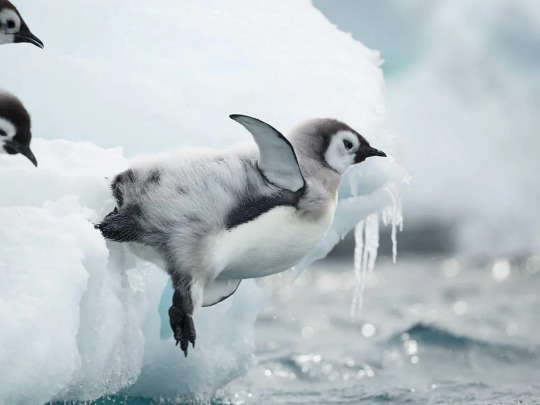
(image id: a newly-independent chick entering the water for the first time. It has not yet fully developed its adult plumage and has a mix of the chick's fluffy down and an adult's smoother coat. It is jumping off a ledge of ice into the water. Two other chicks watch from the side of the image. end id)
Emperor penguins are classified as near threatened by the IUCN, meaning they are losing population and may slip down into threatened status if conservation measures are not taken. The largest threat to emperor penguins is global warming reducing their habitat. Because they need sea ice to lay eggs and brood, the loss of sea ice every year has reduced the ability of the penguins to reproduce. in 2022, loss of sea ice led to a catastrophic failure to reproduce among nearly all known colonies. It is now estimated that 90% of colonies are at risk of dying out due to the loss of sea ice. If these trends are not reverted by reduction of global warming, the penguins could face extinction.

(Image id: two emperor penguins with their chick. The adults are standing behind the chick, which has its downy juvenile plumage. The chick stands about half the height of the parents. end id)
#wet beast wednesday#emperor penguin#penguin#marine biology#biology#zoology#ecology#animal facts#marine life#good parenting#cute#image description
123 notes
·
View notes
Note
Hiya! Would you be willing to explain why keeping captive right whales is completely nonviable, as you mentioned? I’m fascinated, but the adhd simply will not let me parse scientific papers.
That's a fantastic question! While it would be wonderful if captive breeding were a viable option for this critically endangered species, it just isn't possible under any realistic conditions.
For starters, their size. Orcas are the largest mammals successfully held in captivity, and we all know how difficult (and controversial) that is, with only a very small handful of facilities ever pulling it off with any semblance of success. Tilikum, the largest captive orca (although I believe that record has since been overtaken by a male in China), was 22.5 feet (6.9 meters) long and weighed 12,500 pounds (5,700 kg). Most other orcas in human care, particularly the females, are considerably smaller. Compare that to a northern right whale. Even the smallest adults are over 40 feet long—double Tilikum's length—and weigh 88,000 pounds (40,000 kg)—seven times his weight—while the biggest specimens on record reached up to 61 feet (18.5 m) and an incredible 234,000 pounds (106,000 kg).
A tank for an animal that size would be far beyond anything we have the ability to engineer and maintain. Think of how deep it would have to be for the whale to even turn around! The water pressure would be astronomical, wreaking havoc on the building materials even if it were possible to build the structure. And remember—someone has to dive to clean it! Our theoretical right whale habitat would have to be a sea pen, but even the 100-acre facilities proposed with orcas in mind are nowhere near deep enough. While right whales are considered to inhabit "coastal" waters, they do not live right up by the shoreline, like certain orca ecotypes and other small delphinids. They are a pelagic species, designed to live out in the open water column, as are all baleen whales. So, the pen would have to be a floating habitat miles out into the open water (think of an offshore oil rig), with netting sturdy enough to not be destroyed by a 50 ton whale and long enough to extend hundreds of feet to the ocean floor. We're talking probably thousands of square miles of netting, that would have to be routinely inspected for safety and upkeep. So, you would probably need a submersible, since no human can dive that deep. On top of that, it would be difficult to find such a larger stretch of ocean in their habitat without shipping lanes, underwater noise, or pollution. And let's just forget about the logistics of staffing that place—or worse, funding.
Additionally, we wouldn't be able to feed them by tossing fish into their mouth like with dolphins. Northern right whales feed on tiny crustaceans and zooplankton, cruising along and filtering the creatures from the water with their baleen. Assuming our right whale keepers were somehow able to acquire the insane amount of food the whale requires (potentially over 5000 pounds of zooplankton a day), it would need to be scattered throughout the massive habitat to facilitate feeding. I imagine this would probably look something like the way Georgia Aquarium feeds their whale sharks from a little boat, although on a much larger scale. And since the food obviously can't be kept alive, we would need to develop someway of delivering the daily vitamins that are lost in the freezing process—and to keep hundreds of tons of krill frozen on a floating kitchen in the middle of the ocean.
Of course, the ultimate goal of this project would be to breed northern right whales... that means we need to take everything we just talked about and double it, at a bare minimum. For the breeding program to be successful, it would need a whole lot more than just two whales. And unfortunately, even if we lived in world with magical floating thousand-acre sea pens, unlimited krill, and endless money... we still don't know if it would even work. Right whale breeding habits are poorly understood, with the whales mating in cold northern waters before migrating 1,000 miles south to calve. Despite our best theoretical efforts, these migratory patterns could very well be necessary for successful reproduction.
Thank you again for the ask! This was actually a lot of fun to think about! If you want to read about JJ, the only baleen whale ever successfully housed in (temporary) human care, you can find an article and pictures here.
#still working through my inbox#the frequency at which I answer will slow down now that I'm back on clinics#northern right whale#baleen whales#cetaceans#marine mammals#conservation#answered asks#funlovingfuzzball
48 notes
·
View notes
Note
Regarding your post about how big Bug’s toes are, is there a way to tell how big Peafowl will end up growing before they’re mature, like with measuring bits of the leg on a horse or the size of a puppy’s paws?
Nope! You can kind of compare between hatch mates if you have them (like Io was fucking gigantic by the time he was 3 months old), and you can get a pretty good idea by the time they are 8-12 months (comparing Helios to his father as a yearling). Feed when they're very little matters a lot; if they are well fed with good protein when they're little, they tend to grow out bigger as adults. But genetics help. What you want to look for early, more than size, is shape; is the skull shape looking good, are the legs long and strong, is the neck long and unkinked, are they strong enough to carry their wings up, do they carry their tail high, are they growing in strong color early?
I've seen a LOT of people argue about giving peachicks a lot of protein when they're little. People will say it twists their legs because their muscles or tendons grow faster than the other (it varies which people say, "muscles grow faster than their tendons" or "tendons grow faster than muscles" or even that their bones grow faster than whatever). But in my experience, it's not a problem with the protein level. It's a problem with the space those people provide their babies, as well as a problem with a) what KIND of protein and b) ratio of protein to fat.
Most people are feeding only dry chow to their babies. This is... okay. But peachicks prefer moist foods, as anyone that's ever put water in some chow can tell you. So they'll EAT a dry chow but they won't eat a LOT of it, they'll eat the minimum to not die, and so even though the chow may be "nutritionally complete" (and that's another can of worms on its own), they don't get enough of it to grow to their potential. Most dry chows also get their protein from soy or corn, neither of which should make up a peafowl's primary protein source. We make do with what we can get for now, but it would be a LOT better if they were to make a peafowl chow that had fish/krill meal as a base for protein instead. I've heard of a few breeders offering krill oil in wet mash, and how much nicer it makes the colors on their birds, which doesn't surprise me. Fish oil is likely an essential to their diet in the wild- and hilariously (sadly) a lot of owners will straight up and vehemently tell you peafowl don't eat fish... despite direct evidence to the contrary in wild observations. Yes those long leggies help wade through tall grasses, but you don't see pheasants or quail on stilts. Even turkeys don't have the long legs of peafowl.
It's because peafowl are out there doing this:
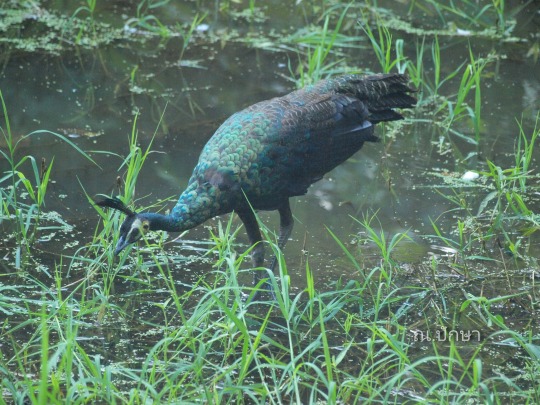
But I'm rambling. The point is, a lot of people underfeed their birds on less than ideal proteins to make up for not providing them enough space to run and fly, things they NEED to be able to do to grow properly. This makes it very difficult to judge what size a bird will be as an adult and, in addition, hard to judge what size offspring they will throw. But even under good circumstances, most of the time it's just wait and see.
91 notes
·
View notes
Note
Thoughts on that trend on tiktok and IG of people feeding their horses fruit rope candy and doughnuts, candy bars, and cheetos?? It drives me crazy but everyone says irs fine because it's a small amount-.-
Honestly, it usually is fine in small amounts. I had a pony that loved licorice. I had one that would get a pumpkin muffin after horse shows. Lots of them like apple cider donuts ginger snaps and carrot cake. Peppermints are a common treat for horses, You shouldn't feed horses chocolate, potatoes, avocados, or caffeine. You also shouldn't feed them lawn clippings because of potential hazards from chemicals and potential for botulism. Bear in mind the daily calorie intake for a horse is more than ten times that of the average human just for maintance (15000 calories) and their stomachs can hold 10-20 gallons (and that is considered small for animals of their size)
Also beer. A lot of people think it's weird that horses can have beer but for some horses its actually medicinal. Horses can sometimes get a condition known as anhydrosis which is when they aren't able to produce enough sweat. As a treatment we often give horses a can or two of Guinness twice a day to help them sweat more and to help lower their body temperature. Brewers grains and yeast are common supplements to help horses with digestive health as they act as a probiotic.
For cheetos in particular, sure horses really shouldn't eat dairy (because lactose) but its a corn chip. Corn is an ingredient of most horse feeds anyways.
Most of those things don't have anything horses can't eat; sugars, their diet is mostly carbohydrates and plant based sugars, horses are herbivores but they can eat animal based protein like eggs, gelatin (a common additive to joint supplements), or krill/fish oils, vegetable oils are a typical additive to feed (though you shouldn't overloaded them with fats as horses don't actually have gallbladder so they cant store bile, which means they can't break down large quantities of fat in one go)
Corn and wheat are in a lot of horse feeds (though they are Inflammatory and toxic if moldy so you do want to weigh the risks and only feed as absolutely needed if using them as a regular feed)
Just for perspective, my 1400lbs mare eats about 4 pounds of a feed with molasses, wheat, and soy as a calorie source, roughly 5 lbs of Alfalfa hay, 36 lbs of grass hay, a half pound of ground flax seed, and she spends all night nibbling on grass (which is sugary compared to hay). Thats A LOT of food.
For supplements she gets apple cider vinegar, garlic, and grape seed extract. Pretty much all of those are toxic to dogs but horses can have them and even benefit from them. They have anti-inflammatory effects that help horses with arthritis, and allergies as well as helping to repel flies
21 notes
·
View notes
Note
Hey blue, could you tell me about whale sharks? :]
-LT
WHALE SHARKKSSSSSSS
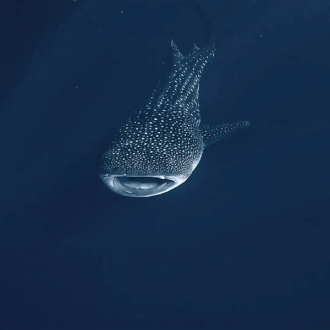
Whale sharks (scientific name Rhincodon Typus) are the largest fish in the sea (specifically females)! The longest whale shark recorded is 61.5 feet long, and the heaviest about 47,000 pounds, or 23.5 tons! Their mouths can be around 4-5 feet wide. They also have the thickest skin of any animal, with various sources estimating it to be anywhere between 4-11 inches thick! Their spot patterns are unique like fingerprints and can be used for identification.
Whale sharks are gentle, slow swimming (up to 3 mph) filter feeders that swim around, open their mouth, suction in water like a vacuum, and eat the little organisms that end up inside! These include plankton, krill, and squid! They have tiny little teeth on the inside of their mouth so when the water floods in, the organisms are trapped in the mouth, and then the water goes back out their gills. They have very small throats so they can only eat small organisms, and as such, they pose no threat to humans.
Like many types of sharks, whale sharks are covered in teeth-like scales called dermal denticles that reduce drag while swimming. However, unlike most sharks, whale sharks have these denticles ON THEIR EYES! It is thought to be that this is a method of protecting the eye, and whale sharks can also retract their eyes between 1/2 inch and 1 inch into their skulls to protect them.
Another fun fact is that no one has ever seen a whale shark give birth!! However, it is known that whale sharks are ovivipariois, meaning the pups (baby whale sharks) hatch from eggs while still inside the mother and then the mother gives birth to live young. A pregnant whale shark was caught and the number of embryos inside her were counted at around 300, so it’s estimated they give birth to about 300 pups at a time. Unfortunately, whale shark pups do have predators including other shark species and orcas, even though adult whale sharks are mainly only threatened by humans, and the survival rate of a whale shark pup to adulthood about one in ten.
Human threat is of high concern to whale sharks, as they are an endangered species. Habitat loss due to overfishing and pollution, illegal poaching and selling of whale shark fins, oil, and meat, entanglement in nets and other debris, boat strikes, and unsustainable tourism all pose threats to these remarkable creatures. However, sustainable ecotourism provides a valuable incentive to keep these animals thriving and their environments intact.
Whale sharks are highly migratory animals that prefer deep trenches of water next to a shallower shelf, as nutrients rise into the shallow water and then they can dive to feed on plankton, krill, squid, etc before coming up to warm back up in the shallow area. Prime coastal feeding spots (at certain times in the season) include Ningaloo Reef in Australia, Cancun, Isla Mujeres, and Isla Holbox in Mexico, Mafia Island in Tanzania, Utila in Honduras, Donsol Bay in the Philippines, the Galápagos Islands, Tofo Beach in Mozambique, and the South Ari Atoll in the Maldives.
For many of these places, ecotourism involving whale shark snorkeling excursions has boosted the area’s economy while providing a powerful incentive for the natural environment to be preserved. However, overcrowding can prove a danger to these beautiful fish, so an ethical whale shark snorkeling trip must: forbid “chumming the waters” or feeding the whale sharks to attract them, limit the number of tourists and boats in the area at a time, only allow snorkeling so the whale shark can safely and quickly swim out of a tourists’ reach if frightened or distressed, and prohibit tourists from touching the whale sharks because touching a whale shark can disrupt the delicate mucous membranes over their skin that help protect them from parasites and bacteria.
I fell in love with whale sharks after seeing them at the Georgia Aquarium in Atlanta, the only aquarium in the West to house whale sharks. These whale sharks came from Taiwan, in the mid/late 2000s, and were transported by a UPS plane in specially built tanks!
Links for if you want to learn more, assist conservation, or just for fun!
World Wildlife Fund: Facts and Conservation (article)
WWF: Adopt a Whale Shark (and receive whale shark stuffie!)
Britannica: Whale Sharks
Georgia Aquarium: Whale Shark Facts (article)
How the Whale Sharks got from Taiwan to Atlanta (video)
One Minute Whale Shark Informational Video
Watch a livestream of the whale sharks at the Georgia Aquarium!!
One of my whale shark stuffies
Yellow lab kisses a whale shark (my favorite video on the Internet)
Whale Shark Octonauts (it’s literally so cute) and creature report song. (both videos)
42 notes
·
View notes
Text
#healthychoices#healthyeating#digestivehealth#health and wellness#omega fatty acids#omega 3 fish oil#omega#omega3#krill oil#fish oil#omega content
0 notes
Text
Comparing Fish and Krill Oil: A Look at the Advantages and Disparities
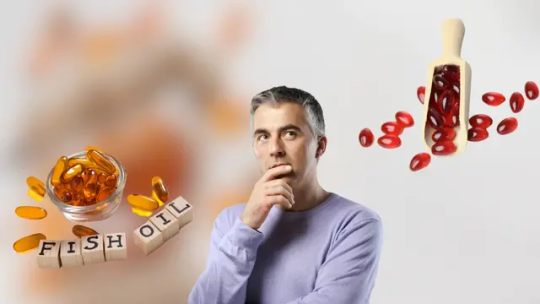
First of all,
Both fish oil and krill oil are well-liked options in the nutritional supplement market because of their possible health advantages. Nonetheless, being aware of the distinctions between these two supplements and their unique benefits might assist people in making well-informed decisions to promote their health and wellbeing. This essay will examine the fields of Krill oil vs Fish oil, explaining what is krill, contrasting their chemical makeup, and analyzing any possible advantages.
What is a Krill?
Krill are tiny crustaceans that resemble shrimp and live in the ocean. They are an essential part of marine ecosystems. These microscopic organisms are widely distributed in the frigid waters of the North Pacific and Antarctic oceans, where they play a vital a primary food source for a variety of marine creatures, such as whales, seals, and seabirds, as part of the marine food chain.
Fish oil and krill oil: differences in composition
Source: Fish oil is collected from fatty fish like salmon, mackerel, and sardines, whereas krill oil is obtained from krill.
Omega-3 Fatty Acids: Rich sources of omega-3 fatty acids, such as eicosapentaenoic acid (EPA) and docosahexaenoic acid (DHA), are found in both krill oil and fish oil. But these fats are usually found in the form of phospholipids in krill oil, while triglycerides are found in fish oil.
Antioxidants: Astaxanthin, an antioxidant found in krill oil, is responsible for the characteristic red color of krill. Astaxanthin is not naturally present in fish oil unless it has been added as a add to the processing.
Absorption & Bioavailability: Research indicates that because of its phospholipid structure, which makes it simpler for the body to absorb, krill oil may be more bioavailable than fish oil.
Sustainability: Antarctic krill, one of the most plentiful marine resources, is the source of krill oil. The possible environmental effects of krill harvesting on marine ecosystems and the creatures that rely on krill for nourishment, however, have drawn criticism. These worries can be lessened by using sustainable fishing methods and certifications like those from the Marine Stewardship Council (MSC).
Possible Allergies: Since krill oil is made from crustaceans, anyone who are allergic to shellfish should take caution when using it. For people who own shellfish, fish oil might be a safer substitute allergies.
Benefits of Krill Oil:
Heart Health: Krill oil is acknowledged for its possible cardiovascular advantages, including as promoting healthy cholesterol levels and lowering the risk of heart disease, much like fish oil does.
Joint Health: Krill oil may be a useful supplement for people with ailments like arthritis since some studies indicate that it may help lower inflammation and enhance joint health.
Brain Function: DHA, in particular, and other omega-3 fatty acids found in krill oil are critical for maintaining brain health and cognitive function, which may help with memory and mental clarity.
In conclusion,
both fish oil and krill oil are excellent providers of omega-3 fatty acids with a host of potential health advantages. Even though krill oil may have some benefits, such increased bioavailability and astaxanthin, people should take sustainability, allergies, and personal preferences into consideration when deciding between the two supplements and your health goals. Speaking with a medical expert can also offer tailored advice on how to include fish or krill oil in a balanced diet and way of life to promote the best possible health and wellbeing.
1 note
·
View note
Text
Are Supplements necessary?
Which Supplements I cannot live without?
Supplements You Can’t Avoid: Are You Missing These Essentials?
Let’s get real for a second — modern life is a whirlwind. We’re juggling work, family, social lives, and trying to squeeze in some self-care between it all. In the midst of this madness, eating a perfectly balanced, nutrient-rich diet every single day feels like a fantasy, doesn’t it? And that’s where supplements come in. Sure, we’d all love to get everything we need from our food, but sometimes that just isn’t possible. So, which supplements are truly hard to avoid in this fast-paced world of ours?
Here’s the audacious truth: some nutrients are just plain tricky to get enough of from diet alone, and for some of us, supplements are a must. But not all supplements are created equal, and not everyone needs the same things. So, let’s break down the supplements that many people simply can’t skip — whether due to diet, lifestyle, or modern living.
1. Vitamin D: Sunshine in a Bottle
We all know the drill: vitamin D is vital for our bones, immune system, and even mood. But here’s the catch — how many of us are actually soaking up enough sun these days? Between working indoors, slathering on sunscreen (and rightly so), and long, dark winters, getting enough vitamin D from sunlight is a tall order. Add to that the fact that it’s found in only a handful of foods, and it’s no wonder so many of us are low on this crucial vitamin.
Without enough vitamin D, you’re looking at weakened bones, a lowered immune system, and even a hit to your mental health. If you’re not getting at least 10–30 minutes of direct sunlight a few times a week, a supplement might just be your best bet to stay healthy and bright. This one’s a no-brainer.
2. Omega-3: The Brain Fuel You Didn’t Know You Needed
Let’s talk fish. Unless you’re munching on salmon, mackerel, or sardines a few times a week (and who really is?), you’re likely missing out on omega-3 fatty acids. These fats are game-changers for your brain, heart, and even mental health. They help fight inflammation, keep your heart ticking along, and are linked to everything from reduced anxiety to better memory.
For those who don’t love fish — or avoid animal products entirely — this is where a supplement can make a world of difference. Fish oil, krill oil, or algae-based supplements can fill that gap with ease. Seriously, your brain will thank you for it.
3. Vitamin B12: The Vegan Achilles Heel
If you’re plant-based, this one’s for you. Vitamin B12 is crucial for nerve function, red blood cell production, and overall energy levels. But there’s a catch — it’s almost exclusively found in animal products. That’s bad news for vegans and vegetarians who can struggle to get enough from diet alone.
Without B12, you risk fatigue, brain fog, and even nerve damage. If you’re following a plant-based diet or if your body doesn’t absorb it well, a B12 supplement is an absolute must. And let’s be honest, even some meat-eaters are deficient because they’re just not getting enough from their diet. No shame in reaching for a little extra help.
4. Iron: More Than Just for Popeye
Iron isn’t just about fighting off anaemia — it’s about keeping your energy levels stable and your immune system strong. But here’s the kicker: iron from plant sources just doesn’t absorb as well as the iron from meat. If you’re not eating red meat, or if you have heavy periods, your iron stores can easily run low.
This isn’t just about fatigue, either. Low iron can mess with your immune system, leaving you more vulnerable to illnesses. For many people — especially women and vegetarians — an iron supplement can be a lifesaver. But, of course, make sure to get your levels checked before you start popping pills.
5. Magnesium: The Unsung Hero
Here’s a nutrient that doesn’t get enough love: magnesium. It’s involved in over 300 processes in your body, from muscle function to heart health to stress reduction. And yet, many people are deficient and don’t even know it.
Why? Well, modern farming practices have left our soil depleted, so even those leafy greens that should be packed with magnesium aren’t always delivering the goods. Throw in a diet that’s heavy on processed foods and low on whole grains, nuts, and seeds, and it’s easy to see why magnesium levels are lagging.
If you’re dealing with stress, sleep issues, or muscle cramps, a magnesium supplement could be exactly what you need to restore balance.
6. Folate (Folic Acid): The Pregnancy Powerhouse
For anyone thinking about pregnancy — or already there — folate (or folic acid) isn’t just important, it’s non-negotiable. It plays a crucial role in preventing birth defects and supporting healthy development. Even if you’re eating your leafy greens, legumes, and fortified grains, it can be tricky to get enough folate from diet alone when your needs increase during pregnancy. So, this is one supplement you don’t want to skip if you’re in the baby-making business.
7. Calcium: Because Bones Don’t Last Forever
We’ve all heard about calcium for strong bones, but as we age, it becomes more important than ever. If you’re dairy-free or simply not a big fan of calcium-rich foods, this is one mineral you can’t afford to ignore.
Low calcium levels lead to weak bones and a higher risk of fractures. For those who avoid dairy, a calcium supplement can make all the difference in keeping your skeleton strong as you age.
8. Zinc: The Immunity Booster
Last but not least, zinc — a superstar for your immune system and overall health. Found in meats, shellfish, and seeds, it’s often tough for plant-based eaters to get enough zinc from food alone. Not to mention, zinc is easily depleted during illness, making it even more critical during cold and flu season.
If you find yourself getting sick often or if you’re vegetarian or vegan, a zinc supplement can be a game-changer for your immune health.
The Bottom Line: Supplements with a Purpose
Here’s the bold truth: while we all want to rely on whole foods for our nutrients, the modern world doesn’t always make that possible. Whether due to lifestyle choices, dietary restrictions, or even the way our food is produced, supplements can fill in those nutritional gaps that are otherwise hard to avoid.
But remember, supplements are just that — supplements. They aren’t a replacement for real, nutrient-dense food. Think of them as backup singers, not the main act. They help when your diet doesn’t quite cut it, but they should never be the sole source of your nutrition.
So, while you might not need every supplement on this list, these essentials are ones you shouldn’t ignore if your diet or lifestyle leaves you lacking. The right supplements can support your health in ways that might just make the difference between thriving and just getting by.
#biology#artificial intelligence#books#branding#supplements#health and wellness#health and nutrition#health & fitness#mental health#healthcare#medicine#lifestyle
3 notes
·
View notes
Text
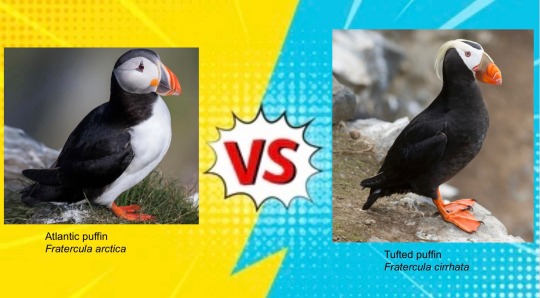
Puffin battle! Who will continue on?
Atlantic puffins, also called common puffins, live across the North Atlantic, breeding on coastlines and spending the rest of their time at sea. They dive underwater to catch fish and crabs. They are social and breed in large colonies, most of which are in Iceland, but are solitary in the winter. They are largely monogamous, but tend to be more loyal to nesting sites than to mates. Pairs bond by building nests and rattling their bills together. These puffins burrow underground to nest, and so can fly, dig, and swim. On average, Atlantic puffins live to be 30 or more years old, with the oldest recorded being 41 years. Puffin chicks are called “pufflings.” Unfortunately, these birds are classified as Vulnerable due to pollution such as oil spills.
Tufted puffins are found in the North Pacific Ocean. Like many other shorebirds, they breed on islands and spend the rest of their lives at sea. Young birds may spend the first 3 years of their lives at sea, until they are old enough to breed and return to land. They feed on underwater on squid, krill, and fish; adults mostly eat squid and krill, while they feed fish to their young. They nest in burrows, which can be over 5 feet deep.
18 notes
·
View notes